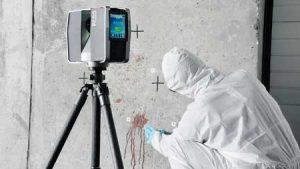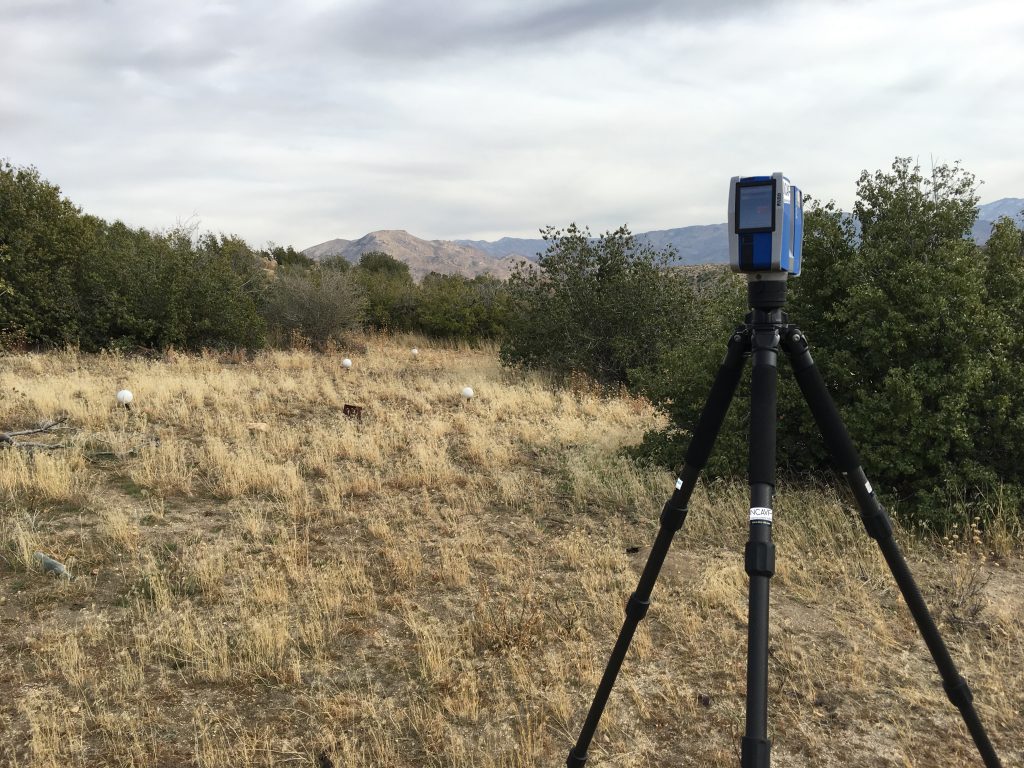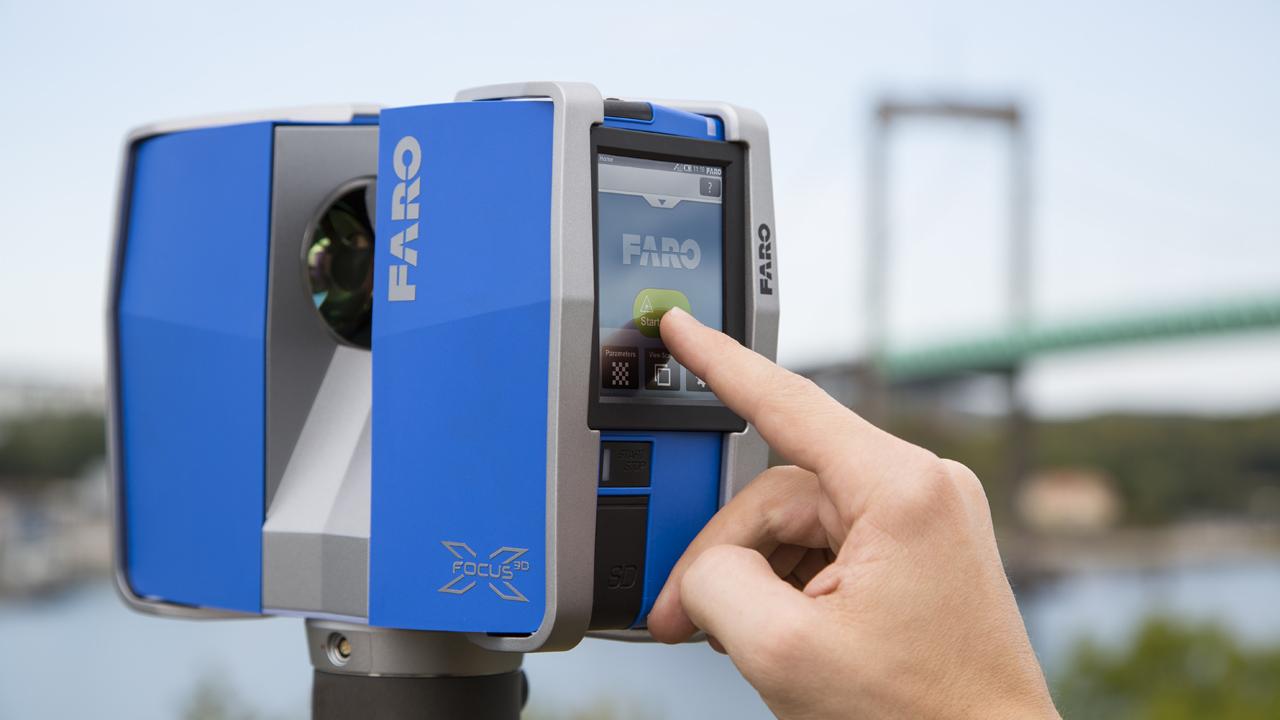3D laser scanners and computer modeling software
Forensic crime scene reconstruction is a valuable tool utilized by both forensic experts and attorneys to help show the facts and details of an event as well as to argue their case to a jury. Anyone familiar with Star Trek should have fond memories of how the crew often utilized the “holodeck” on the show. (For nonTrekkies, the holodeck was a sort of virtual reality which utilized projectors and force fields to create a realistic environment with which humans could physically interact.) Often, the holodeck was used in a forensics capacity to solve crimes or mysteries by utilizing it as a futuristic crime scene reconstruction tool (refer to Star Trek:TNG episode “A Matter of Perspective”). Sometimes truth is stranger than fiction. Virtual Reality is starting to be utilized today in the field of crime scene reconstruction to help the jury get a very accurate and realistic virtual reality tour of what happened at the scene of the incident or crime.
Crime scene reconstruction is the forensic science discipline in which one gains “explicit knowledge of the series of events that surround the commission of a crime using deductive and inductive reasoning, physical evidence, scientific methods, and their interrelationships” (Association for Crime Scene Reconstruction, 2012). As will be described below, however, it’s important to note that such reconstructions are not only limited to criminal cases.
Virtual Reality is designed to replicate a room, building, or environment and allow participants the ability to interact with that environment (to some degree). Virtual reality artificially creates a sensory experience, which can include sight, touch, hearing, or smell. Now imagine the ability to combine these two tools, crime scene reconstruction and virtual reality, and you can begin to picture the future of forensics and jury education. By utilizing virtual reality as a tool to create an accurate crime scene reconstruction, forensic experts and attorneys can show the jury details of what did (or did not) happen by walking them through a 360 degree view of the area, or a 3D forensic reproduction of the scene.
Now imagine the ability to combine these two tools, crime scene reconstruction and virtual reality, and you can begin to picture the future of forensics and jury education. By utilizing virtual reality as a tool to create an accurate crime scene reconstruction, forensic experts and attorneys can show the jury details of what did (or did not) happen by walking them through a 360 degree view of the area, or a 3D forensic reproduction of the scene.
Creating a Virtual Crime Scene Reconstruction
There are several steps involved in converting an actual crime scene into a virtual crime scene that can be shown in court. The process of creating a virtual reality crime scene reconstruction often starts with a 3D Laser Scanner such as the Focus3D X 330 made by Faro. This particular laser scanner is one of the larger models in the field of 3D scanning for the purposes of recreating a scene (it’s a little larger than a basketball) and it is mounted onto a tripod. The Focus3D X 330 has a range of 330 meters, or 1080 feet. This fascinating technology can be placed in the middle of a room, for instance, to complete a highly accurate scan of every detail. The scanner creates millions of points of reference using the laser and saves this information to a memory card, which is then transferred to a computer. This process can be repeated throughout an entire house, or any crime scene, where the multiple scans are stitched together to create a larger contiguous recreation.
FARO has a series of excellent 3-D scanners. In addition to making a laser scan, the devices take high definition pictures that a forensic expert can use to overlay the scan, in order to create a composite image with accurate color.
Faro also has a handheld 3D laser scanner that can be used to create a virtual reproduction of a smaller scene, such as a body, the console of a vehicle, and so forth. There are also other makes and styles of 3D laser scanners that can be deployed for a variety of scenes or environments.
Although creating a 3D scan of the interior of a small room may be the easiest technologically, the laser scanning process is not restricted to indoors. Many of the more advanced laser scanning devices can work outside too, including traffic intersections, desert and forest locations, or on rooftops. However, barren environments such as an open field or long empty street pose added challenges because the distances may be longer than the farthest distance allowed by the scanner. In order for the scanner to record a reference point which the computer can then translate into a wall or object, the item being scanned must be within range of the 3D scanner. If it is too far away (greater than 300 meters for instance) the laser scanner will not record anything.
The 3D scanner is clearly advantageous to use for creating crime scene reconstruction for many criminal cases, however this technology has other forensic applications including many types of crimes, situations, and events. Other types of cases that can utilize a 3D scanner and reconstruction include:
- Traffic collisions
- Train, plane, or public transportation crashes
- Snowboarding or skiing accidents
- Personal Injury cases, slip and falls, etc.
- Vandalism, arson, etc.
- Terrorist attacks or bombings
- Active shooter scenarios, mass shootings, or murder suicide incidents
- Riots or civil unrest
- High speed car chases, police pursuits, illegal street racing

Once the 3D laser scan is uploaded to a computer, it can be rendered into a 3D model of the crime scene using a CAD (computer aided drafting) program. Using software such as IC Crime (created by North Carolina State University), the laser scan can be viewed as a virtual “tour” of the crime scene. A jury can virtually walk through an entire crime scene and view every detail of the room, building, or environment and see it in the first person just as the detectives and forensic technicians did when the crime was originally being investigated. Practically speaking, a jury will be able to explore the crime scene reconstruction in the same manner they would navigate a first person video game, a la Doom (or Call of Duty).

Presently, most juries are shown a crime scene via still images. Sometimes, a jury may be shown a video that was made of a walkthrough of the crime scene. But by creating a 360 degree video or a virtual tour of the crime scene, forensic experts, attorneys, and juries can view the scene from every angle. The ability to view a crime or incident scene from any angle means that not only can the jury gain perspective on the events, but eyewitness testimony can be judged and weighed more accurately.
Could an eyewitness have been able to see an event he claims?
Is the eyewitness telling the truth? Let the jury decide. Suppose an eyewitness testifies that from where he was standing, he was able to see the defendant attack the victim. The virtual reality crime scene recreation will allow the jury to see the area of the attack as well as where this eyewitness was standing. Upon examining the eyewitness’s position relative to the attack, the jury can determine what the eyewitness saw. The crime scene recreation may reveal that the eyewitness’s view was obscured, or perhaps he was able to see what happened. In either case, the crime scene recreation would prove extremely useful in such a scenario.
Utilizing this new technology, Virtual Reality, 3D Laser Scanners, and CAD software, crime scene reconstruction has not only become extremely accurate in it’s ability to recreate a scene, but it enables a jury to virtually enter the crime scene itself and immerse itself in what the investigator experienced in the crime scene. This technology will have a huge impact in aiding the jury to reach fair verdicts.
I never fully realized how important it was to have a complete understanding of the audio and video evidence. This was the lynchpin to winning the case.Attorney who wished to remain anonymous
We settled the case Friday, and your work was crucial in the DA's decision. Thank you.Attorney Anthony Salerno
... It was stunning to see what NCAVF can do…Attorney Amy Schroder
You saved my life.anonymous
NCAVF's preparation of images for the jury helped simplify an otherwise complex case.Attorney William Hadden
The work you did is invaluable...Attorney Jessica Melikian

